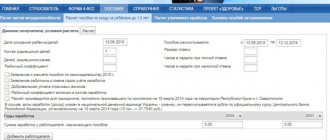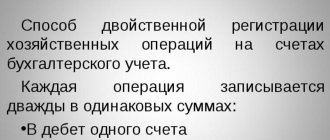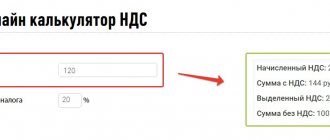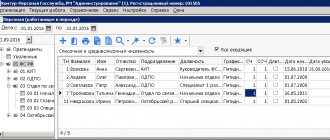- September 2, 2019
- Accounting
- Anastasia Ivanova
This type of analysis is used by consulting firms to understand where conventional accounting has fallen short. It answers the questions: “What do you need to pay attention to?” and “How to restore the profitability of the company or individual divisions?”
Dividing costs into variable and fixed helps solve a number of management problems:
- Find out where the money is going.
- Distribute resources between products.
- Determine the required minimum production.
- Calculate the margin of financial strength for your company.
The concept of variable and fixed costs
In this article, the concepts of fixed and variable costs, expenses and costs will be used interchangeably, although some scholars do not share these terms.
Variable costs are those company expenses that decrease or increase with production volume. In other words, the more products a company produces, the higher its variable costs and vice versa. Examples of variable expenses include piecework wages for workers, materials for production, electricity for production equipment, and payment for transporting goods.
Fixed costs are those expenses that a firm must always pay, no matter how much output it produces. There are fixed costs even when products are not produced at all. These include management salaries, electricity for office premises, depreciation, rent, etc.
Fixed costs. Definition
Fixed costs (Fixed cost, FC, TFC or total fixed cost) are a class of enterprise costs that are not related (do not depend) on the volume of production and sales. At each moment of time they are constant, regardless of the nature of the activity. Fixed costs, together with variables, which are the opposite of constant, constitute the total costs of the enterprise.
Take our proprietary course on choosing stocks on the stock market → training course
Types of costs
In business it is very difficult to find “pure” variable and fixed expenses. This division is used to simplify the analysis. The types of variable and fixed costs in real life are semi-fixed and semi-variable costs.
Their peculiarity is that some of the costs are variable, and some are constant. An example is a worker’s wages, which consists of a salary and a bonus for each part made. The salary portion will be a fixed cost, and the additional payment for parts will be a variable cost.
Graphical representation of variable and fixed costs
Variable costs appear as a straight line on a graph. The starting point is the origin because at zero production variable costs are zero. A graph is considered to be a linear function of the form:
- Y = k*x, where y is the value of variable costs in monetary terms, x is the quantity of products produced, k is the amount of variable costs per unit of production
The fixed cost graph is also straight, but not from the origin, but parallel to the horizontal axis. This is due to the already described features of fixed costs. The equation looks like:
- Y=k, where y, k is the value of fixed costs in monetary terms.
Analysis time interval
As the company develops and turnover increases, for example, when acquiring additional capacity or hiring new managers, fixed costs change. On the graph it looks like steps.
The division into variable and fixed costs can only be made in the short term. The fact is that in the long term, turnover grows, payments, rental prices and utility bills increase under the influence of inflation and other external factors. As a result, all company expenses become variable.
CVP analysis
The “Cost – Volume – Profit” analysis is used to determine the volume of production at which a change from loss to profit occurs. This type of analysis can be represented graphically:
The “Total costs” line is formed by adding two straight lines: “Fixed costs” and “Variable costs”. The point where revenue and total costs intersect is called the break-even point. It reflects the situation when the profit is 0. To the left and right of the break-even point are areas of loss and profit.
CVP analysis is a simplified model for assessing the situation in a company. Like all other models, it has a number of limitations:
- The selling price per unit does not change.
- Variable costs per unit are constant.
- Total fixed costs are fixed.
- Everything the company produces is sold, without reserve.
- Changes in production volume are the only factor that affects fixed and variable costs in the cost of production.
- If a company sells more than one product, their revenue ratio does not change.
Summarizing
Summarizing the above, we note that initial planning of project expenses is an extremely important stage in creating a business. It is especially important in this process to correctly divide all costs into fixed and variable costs . This will become one of the main tools for analyzing product costs, a source of reducing it, and therefore increasing the efficiency and competitiveness of your enterprise. At the same time, fixed and variable costs, their list and structure, must be linked to other sections of the business plan. First of all, with such a part of business planning as investment planning.
If you are planning to independently plan the expenditure part of the project, then we recommend that you prepare a ready-made business plan for an enterprise engaged in similar activities. This will greatly facilitate the process of building the correct structure of a business plan and developing a convenient financial model. You can also contact professionals in the field of business planning to develop such a document to order, taking into account the individual characteristics of your project.
Break-even point and margin of financial strength
These figures can be calculated using a formula if you divide the costs into variable and fixed for your business. The formula for calculating the break-even point is as follows:
- Break-even point (in units) = Fixed costs / (product price - variable costs per unit)
If you multiply the break-even point in units by the price of the product, you get the amount of revenue for break-even production.
The formula works for enterprises producing only one type of product.
To calculate the margin of financial safety (FSA), you need to subtract the break-even point from the company’s revenue:
- ZFP = Revenue - Break-even point (in monetary terms)
The name of the indicator speaks for itself. It demonstrates the amount that a company can count on in case of unforeseen circumstances. The greater the margin of financial strength, the further the company is from an unprofitable state.
Fixed costs and the break-even point of the enterprise
Variable costs are part of the break-even point model. As we determined earlier, fixed costs do not depend on the volume of production/sales, and with an increase in output, the enterprise will reach a state where the profit from products sold will cover variable and fixed costs. This state is called the break-even point or the critical point when the enterprise reaches self-sufficiency. This point is calculated in order to predict and analyze the following indicators:
- at what critical volume of production and sales will the enterprise be competitive and profitable;
- what volume of sales must be made in order to create a zone of financial security for the enterprise;
Marginal profit (income) at the break-even point coincides with the enterprise's fixed costs. Domestic economists often use the term gross income instead of marginal profit. The more the marginal profit covers fixed costs, the higher the profitability of the enterprise. You can study the break-even point in more detail in the article “Break-even point. Graphs and example of model calculation in Excel. Advantages and disadvantages".
Take our proprietary course on choosing stocks on the stock market → training course
Break-even point for multiple products
In reality, you rarely see a company producing one type of product. Therefore, a method was invented to calculate the break-even level for a set of products. However, it has one important limitation: the share of different products in the company's revenue must be constant. In other words, whenever X units of product A are sold, Y units of product B and Z units of product C are also sold.
To better understand how to calculate the indicator, consider an example.
A certain company produces and sells two products: lemonade and water. Water sells for $7 per unit and has variable costs of $2.94 per unit, while lemonade sells for $15 per unit and has variable costs of $4.50 per unit. The marketing department estimates that for every 5 units of water sold, 1 unit of lemonade will be sold. The organization's fixed production and management costs are $36,000.
Let's calculate the break-even point for this company.
Step one: calculate the difference between price and variable costs per unit of production. This difference is also called the specific contribution margin.
- For water: 7 - 2.94 = $4.06
- For lemonade: 15 – 4.5 = 10.5 dollars.
Step two: calculate the marginal profit for the product set.
- (4.06 * 5) + (10.5 * 1) = $30.8
Step three: substitute the values into the break-even point formula:
- 36,000 / 30.8 = 1169 sets
Step four: calculate the number of products of each item that must be sold to make zero profit.
- 1169 * 5 = 5,845 bottles of water
- 1169 * 1 = 1169 bottles of lemonade
Step five: calculate the break-even point in monetary terms.
- (5845 * 7) + (1169 * 15) = $58,450
In order for production not to be unprofitable, the company needs to receive revenue of $58,450. Let us recall that this figure is correct only if five bottles of water are sold for every bottle of lemonade.
Examples of calculating the break-even point
Example 1: Calculation of critical volume
The current sales volume of the travel agency was 145 tours with an average bill of 25,000 rubles; variable costs per unit of production – 14,200 rubles; total fixed costs for the year – 1,024,000 thousand rubles. It is necessary to determine at what volume of production the enterprise operates without profit or loss. vouchers _
Consequently, the company will make a profit when selling more than 95 vouchers. Or in other words, the critical sales volume is 95 vouchers.
Example 2. Break-even point and margin of safety
Based on example 1, find the safety margin of the investment project in value and physical terms.
Safety margin
of vouchers.
Safety margin
of rubles.
Example 3. Building a break-even chart
Let's look at a graphical representation of the break-even point based on the previous example.
Break-even point chart
Thus, the model for determining the break-even point (critical volume, break-even threshold, profitability threshold) allows you to solve several problems. First, find the volume at which the enterprise or project does not make a profit, but also does not incur losses. Secondly, find the safety margin of the project. Third, assess potential risks.
The model for calculating the break-even point (critical production volume) is the simplest way to analyze project risks.
Margin analysis
This type of analysis is used to select the most profitable products. To apply it, it is necessary to divide costs into variable and fixed. The basic premise is that the capacity of any business is limited. The main concept is marginal income (MI) or marginal profit. The formula for calculating marginal income is:
- MD = Revenue - Variable costs
Or:
- MD = Profit + Fixed costs
Since fixed costs are shared across the entire enterprise, high-margin products should be prioritized. For clarity, let's look at an example again.
The company produces 3 types of products: crackers, chips and corn sticks. Prices, variable costs per unit and specific contribution margin are presented in the table:
| Product | price, rub. | Specific variable costs, rub. | Specific MD, rub. |
| Crackers | 15 | 5 | 10 |
| Chips | 40 | 20 | 20 |
| Corn sticks | 30 | 8 | 22 |
The company can only produce 20,000 packages per month. The maximum quantity of each type of product that can be produced: crackers - 14,000 packages, chips - 10,000, corn sticks - 8,000.
The maximum MD will be:
- (22 * 8000) + (20 * 10,000) + (10 * 2000) = 396,000 rub.
You can independently calculate the marginal income for all combinations and make sure that a set of 8,000 packs of corn sticks, 10,000 packs of chips and 2,000 packs of crackers is the most profitable.
Using marginal analysis, we used all production capacities and selected the most profitable set of products.
Fixed and variable expenses in accounting
Accounting for fixed and variable costs is optional. It is used by managers to make management decisions. However, in accounting, this division can be useful when calculating costs using the “Direct Costing” method.
It also adds a division into direct and indirect costs. The essence of this method of cost accounting is that the costs of producing products form production costs, and general business costs are written off as period expenses. The cost of production is accumulated on account 25, and production maintenance costs are accumulated on account 26. The entire amount of the 26th account is written off as expenses for the period, regardless of how many products were sold.
Variable Cost Examples
According to international financial reporting standards, all variable expenses of a company are divided into direct and indirect.
Indirect variable costs are affected by changes in production volumes. But due to the peculiarities of production technology, it is not possible to directly attribute them to the cost of the manufactured product.
At the same time, variable direct costs are directly related to the cost of a certain type of product. The source of information on them are accounting registers.
The following items can be cited as an example of direct variable costs:
- Labor remuneration for workers involved in the production of certain types of goods (with mandatory contributions to funds from their payroll);
- Material and raw materials resources, components;
- Fuel and energy resources necessary for the operation of mechanisms and machines that produce specific products.
Indirect variable costs include costs such as:
- Payment for material resources used in complex production processes;
- Financing of innovative developments;
- Payment for business trips of employees, etc.







